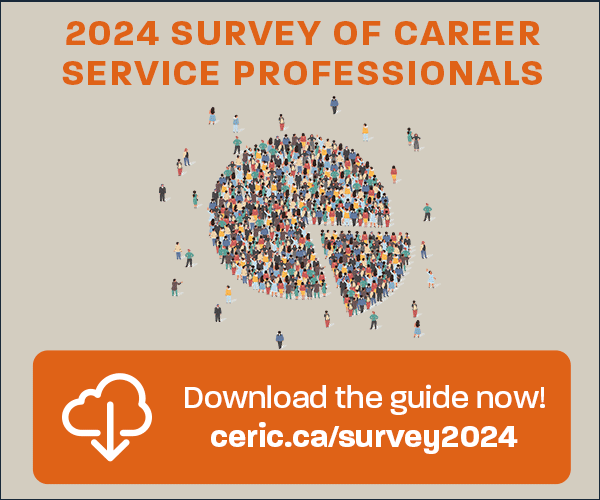Bridging the Disconnect Between Academic Institutions and Employers in the 4th Industrial Revolution
DOI:
https://doi.org/10.53379/cjcd.2022.332Keywords:
employers, academic institutions, disconnect, industrial revolution, skills gapAbstract
The skills gap is widening and causing greater inequality in the today’s workplace. Bridging the disconnect between academic institutions and employers in the 4th industrial revolution is of critical importance to the success of our current market.
Combining and analyzing both qualitative data gathered from key focus groups and a literature review, it is evident that a commitment to self- directed learning requires students and faculty to both understand the value of empowering learning, and to take increased responsibility for decision making. Academic institutions need to address skills required to become self-directed learners and must present students with the environment that lets them be more self-directed. Employers on the other hand must provide institutions with the skills they require upon hiring.
References
Alison. (2021). A Growing Skills Gap is Leading to Greater Inequality. Online Learning can Change This. Retrieved from: https://alison.com/media-centre/articles/a-growing-skills-gap-is-leading-to-greater-inequality-online-learning-can-change-this
Appleby, D. C. (2017). The soft skills college students need to succeed now and in the future. American Psychological Association. Retrieved from: https://www.apa.org/ed/precollege/psn/2017/09/soft-skills
Bain, K. (2021). Super Courses: The Future of Teaching and Learning: The Future of Teaching and Learning. Princeton University Press.
Berlyne, D. E. (1954). An experimental study of human curiosity. British Journal of Psychology, 45: 256-265.
Caldwell, M. (2020). ‘Schools are killing curiosity’: why we need to stop telling children to shut up and learn. The Guardian. Retrieved from: https://www.theguardian.com/education/2020/jan/28/schools-killing-curiosity-learn
Deci, E. L., Ryan, R. M., Williams, G. C. (1996). Need Satisfaction and the Self-Regulation of Learning. Learning and Individual Differences, 8(3): 165-183.
Douglass, J. A. & Edelstein, R. (2009). THE GLOBAL COMPETITION FOR TALENT: The Rapidly Changing Market for International Students and the Need for a Strategic Approach in the US. Center for Studies in Higher Education, 8.09.
Du Toit-Brits, C. (2018). Towards a transformative and holistic continuing self-directed learning theory. South African Journal of Higher Education, 32(4): 51-65.
Erickson, C. L. & Norlander, P. (2021). How the Past of Outsourcing and Offshoring is the Future of Post-Pandemic Remote Work: A Typology, a Model, and a Review. SSRN.
Gandolf, S. (2021). Competition is increasing – rapidly and dramatically. Healthcare Success. Retrieved from: https://healthcaresuccess.com/blog/healthcare-marketing/competition.html
Garnero, A. & Pagani, F. (2021). Breakingviews - Guest view: Dislocation will be 2021’s buzzword. Reuters. Retrieved from: https://www.reuters.com/article/us-health-coronavirus-economy-breakingvi-idUSKBN29I16Y
Harter, S. (1978). Pleasure Derived from Challenge and the Effects of Receiving Grades on Children’s Difficulty Level Choices. Child Development, 49(3): 788-799.
Howard-Jones, P. A. & Demetriou, S. (2009). Uncertainty and engagement with learning games. Inst Science, 37: 519-536.
Hu, Y. & Ma, J. (2016). Talent Training in Commodities on the basis of “Six-dimensional Synergy” School-enterprise Cooperation. School-Enterprise Cooperation: 377-380.
Jirout, J. J. (2020). Supporting Early Scientific Thinking Through Curiosity. Front Psychol (11): 1717.
Kumar, R. & Tan, B. S. (2018). Innovative Education: Public-Private Partnership for Developing International Trading Talent. SSRN. http://dx.doi.org/10.2139/ssrn.3149239
Kwarteng, A. B. (2014). Identifying employee talent for development and retention. PhD Diss. Retrieved from: http://ir.knust.edu.gh/handle/123456789/7631
Lambert, P. (2021). We Need More Robust Employer-Education Partnerships. Paul Lambert Consulting. Retrieved from: https://www.paulwlambert.com/blog/we-need-more-robust-employer-education-partnerships
Lazebnikova, A., Koval, T. & Frantsuzova, O. (2019). Potential of Secondary School Social Sciences in Formation of Students’ Universal Skills. The European Proceedings of Social & Behavioural Sciences: 504-512.
Leonard, P. M. (2020). COVID‐19 and the New Technologies of Organizing: Digital Exhaust, Digital Footprints, and Artificial Intelligence in the Wake of Remote Work. Journal of Management Studies.
Nagele, C. & Stalder, B. E. (2017). Competence and the Need for Transferable Skills. Competence-based Vocational and Professional Education: 739-753.
Nijhof, W. J. & Brandsma, J. (1999). Bridging the Skills Gap between Work and Education. Springer Netherlands.
Nordstrom, K. & Ridderstrale, J. (2001). Funky Business: Talent Makes Capital Dance (2nd Edition). Pearson International.
Matern, J-L. (2020). Mass collaboration between employers and universities is the future of higher education. Retrieved from: https://medium.com/emerge-edtech-insights/mass-collaboration-between-employers-and-universities-is-the-future-of-higher-education-part-1-ed840467bfd5
Mishra, P. T. & Mishra, A. (2019). Role of Higher Education in Bridging the Skill Gap. Universal Journal of Management, 7(4): 134-139.
Muhamad, S. (2012). Graduate Employability and Transferable Skills: A Review. Advances in Natural and Applied Sciences, 6(6): 882-885.
Murphy, M. C. & Dweck, C. S. (2009). A Culture of Genius: How an Organization’s Lay Theory Shapes People’s Cognition, Affect, and Behavior. Personality and Social Psychology Bulletin, 36(3):283-296.
Mulheisen, M. (3018). The Long and Short of the Digital Revolution. Finance & Development, 55(2).
Pissarides, K. (2020). Outsourcing relevancy in a post COVID-19 environment. Delloite. Retrieved from: https://www2.deloitte.com/cy/en/pages/tax/articles/outsourcing_relevancy_post_covid19_environment.html
Reed, D., Haroon, J. & Ryan, P. S. (2014). Technologies and Policies to Connect the Next Five Billion. Berkeley Technology Law Journal, 29(2): 1205-1252.
Rogerson, C. & Scott, E. (2010). The Fear Factor: How It Affects Students Learning to Program in a Tertiary Environment. Journal of Information Technology Education, 9.
Salzman, A. (2020). Inside Saudi Arabia’s $360 Billion Investment Fund. Retrieved from: https://www.barrons.com/articles/interview-with-yasir-al-rumayyan-head-of-saudi-arabias-sovereign-wealth-fund-51600453301
Trzesniewski, K. H., Donnellan, M. B., Moffitt, T. E., Robins, R. W., Poulton, R. & Caspi, A. (2006). Low self-esteem during adolescence predicts poor health, criminal behavior, and limited economic prospects during adulthood. Dev Psychol, 42(2): 381-390.
World Economic Forum. (2016). The Fourth Industrial Revolution: what it means, how to respond. Retrieved from: https://www.weforum.org/agenda/2016/01/the-fourth-industrial-revolution-what-it-means-and-how-to-respond/
Young, K. E. (2020). Sovereign risk: Gulf sovereign wealth funds as engines of growth and political resource. British Journal of Middle Eastern Studies, 47(1): 96-116.
Xu, M., David, J. M. & Kim, S. H. (2018). The Fourth Industrial Revolution: Opportunities and Challenges. International Journal of Financial Research, 9(2).

Downloads
Published
How to Cite
Issue
Section
License
Copyright (c) 2022 Canadian Journal of Career Development

This work is licensed under a Creative Commons Attribution-NonCommercial-NoDerivatives 4.0 International License.
















